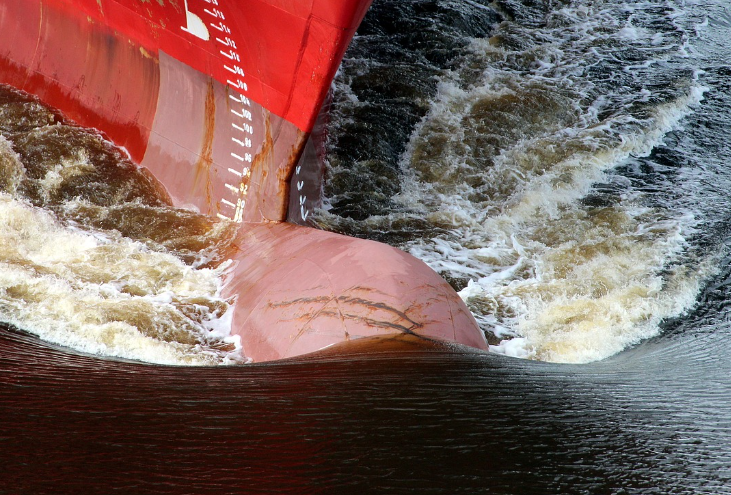Future Proof Shipping’s hydrogen-powered vessels achieve annual CO2 savings of 2,000 tonnes per barge for 100 round trips of 500 kilometers each, while H2 Barge 2 is projected to reduce 3,000 tonnes of CO2 annually on Rhine operations. These emission reductions represent significant environmental impact from two vessels, though scaling challenges related to hydrogen costs and limited financial incentives constrain broader industry adoption of zero-emission shipping technology.
Vessel Performance and Technical Specifications
H2 Barge 1, measuring 110m x 11.45m, launched in May 2023 for container operations between Rotterdam and Belgium’s BCTN terminal in Meerhout. H2 Barge 2 followed in February 2024, operating on the Rhine between Rotterdam and Duisburg, targeting the route that handles 80% of Rhine cargo flows according to operational data.
The vessels utilize fuel cell systems that convert hydrogen into electricity and water for electric propulsion, eliminating direct CO2 emissions during operation. However, the total carbon footprint depends on green hydrogen production methods and supply chain emissions, which remain subject to renewable energy availability and electrolyzer efficiency.
Economic Barriers and Funding Mechanisms
High hydrogen costs create fundamental economic challenges for commercial adoption. The vessels require containerized green hydrogen for refueling operations at terminals like Alblasserdam near Rotterdam, though hydrogen pricing remains significantly higher than conventional marine fuel alternatives. This cost differential necessitates external financial support for commercial viability.
The ZEM Ports NS project operated with a €4.3 million budget from September 2019 to March 2023, supporting hydrogen shipping infrastructure development across Denmark, Sweden, Belgium, the Netherlands, and the UK. Future Proof Shipping received approximately 10% of retrofitting costs through this EU Cohesion Policy funding via the Interreg North Sea program, though the company notes this represents insufficient support for broader fleet conversion.
Retrofit Strategy and Technical Conversion
Future Proof Shipping’s approach involves acquiring conventional diesel vessels and retrofitting them with hydrogen-electric propulsion systems. H2 Barge 2, previously named FPS Waal, underwent conversion at Holland Shipyard Group’s Werkendem facility, while H2 Barge 1 was formerly known as FPS Maas before conversion. This retrofit strategy enables faster deployment compared to new-build vessels while validating conversion feasibility for existing fleet operators.
The technical conversion involves replacing diesel engines with fuel cell systems and hydrogen storage, requiring significant vessel modifications for safety, weight distribution, and operational systems. Success depends on achieving reliable performance while managing increased complexity compared to conventional propulsion systems.
Commercial Operations and Market Validation
H2 Barge 1 operates several times weekly for Nike between Rotterdam and Belgium, providing commercial validation for hydrogen shipping in container transport applications. The vessel is chartered to BCTN Network of Inland Terminals on behalf of Nike EMEA, demonstrating corporate customer willingness to support zero-emission logistics despite higher costs.
Future Proof Shipping plans to deploy 10 inland and short-sea vessels within five years, indicating ambitious scaling objectives, though dependent on resolving financing and hydrogen supply challenges. Commercial success requires sustained customer commitment and a competitive total cost of ownership compared to conventional shipping.
Infrastructure Development Requirements
Hydrogen shipping requires specialized refueling infrastructure at ports and terminals, creating chicken-and-egg challenges for fleet expansion. Container-based hydrogen delivery at Alblasserdam represents one approach to infrastructure constraints, though scalability depends on green hydrogen production capacity and distribution networks.
ZEM Ports NS specifically addresses integration of zero-emission fuels into port refueling infrastructure and local energy systems, though infrastructure development timelines may lag behind vessel deployment schedules. Port authorities must coordinate hydrogen supply infrastructure with shipping company operational requirements.
Policy Support and Market Incentives
The company’s CEO emphasizes that current incentives remain insufficient for financial competitiveness against fossil-fueled vessels. European Union support through multiple programs—ZEM Ports NS, Flagships project, and Interreg funding—demonstrates policy commitment while highlighting the need for sustained financial mechanisms to achieve commercial viability.
Maritime decarbonization policies increasingly target shipping emissions, though specific mandates and carbon pricing mechanisms that would improve hydrogen shipping economics remain limited. The International Maritime Organization’s greenhouse gas reduction targets create regulatory pressure, though implementation timelines and enforcement mechanisms require development.
Operational Experience and Performance Validation
Captain Dragoş Lupu’s 18-year maritime experience provides an operational perspective on hydrogen propulsion performance, though specific operational data regarding efficiency, maintenance requirements, and system reliability have not been disclosed. Long-term operational experience from these vessels will inform broader industry adoption decisions.
The vessels provide valuable operational data for hydrogen shipping technology validation, including fuel consumption rates, maintenance schedules, and system performance under various operating conditions. This operational experience becomes critical for demonstrating commercial feasibility to potential fleet operators and investors.
Scaling Challenges and Industry Transformation
Despite technical success and demonstrated emission reductions, Future Proof Shipping’s experience highlights systemic challenges facing hydrogen shipping adoption. High fuel costs, limited infrastructure, and insufficient financial incentives create barriers that individual companies cannot overcome without coordinated industry and policy support.
The transition from consultancy to vessel operations demonstrates entrepreneurial commitment to proving zero-emission shipping viability, though commercial success requires broader ecosystem development, including hydrogen supply chains, port infrastructure, and supportive regulatory frameworks. These vessels represent important proof-of-concept deployment while highlighting the substantial coordination required for industry transformation.
